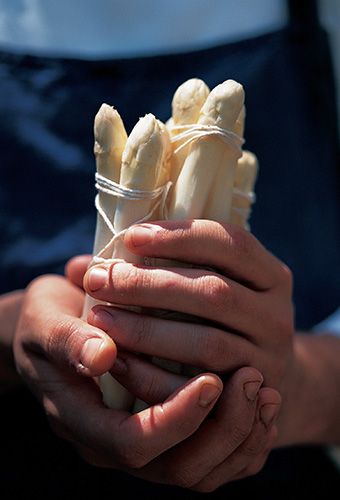Advertisement
Big-pot blanching
Appears in
Published 1999

Blanching green vegetables in a big pot with a lot of water and a lot of salt until they are thoroughly cooked is critical to the finished product. It’s entirely a color issue. I want green vegetables to be bright, bright green so their color can launch the flavor and impact of the entire dish. The old saying “We taste first with our eyes” is true. The faster a vegetable is cooked, the greener it becomes.
Raw green vegetables appear dull because a layer of gas develops between the skin and pigment. Heat releases this gas, and the pigment floods to the surface. But this happens fast, and pretty soon, as the vegetable cooks, the acids and enzymes in the vegetable are released, dulling the green color. At the same time, pigment begins to leach out into the water. So the challenge is to fully cook a vegetable before you lose that color, which means cooking it as fast as possible. There are three key factors to achieve this. First, blanch in a large quantity of water relative to the amount of vegetables you’re cooking, so you won’t significantly lower the boiling temperature when you add the cold vegetables. If you lose the boil, not only do the vegetables cook more slowly, but the water becomes a perfect environment for the pigment-dulling enzymes to go to work (these enzymes are destroyed only at the boiling point). Furthermore, using a lot of water means the pigment-dulling acids released by the vegetables will be more diluted.

